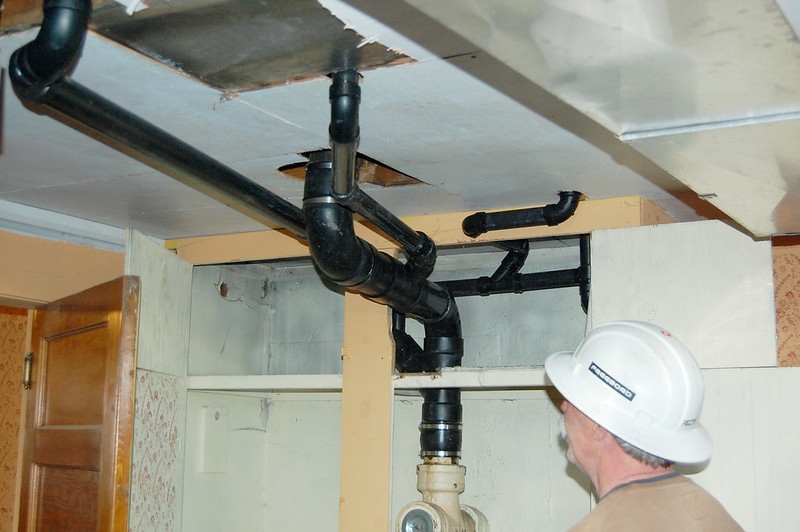Water is a vital component of our existence, and plumbing has made it much easier to obtain it.
Ancient civilizations such as the Greeks, Romans, Persians, Indians, and Chinese towns devised techniques to irrigate their crops and offer public baths, wastewater removal, and potable water, which led to the development of plumbing.

Around 2700 B.C. some of the first plumbing systems appeared in ancient towns, using earthen pipes to deliver water to public baths and to remove effluent.
The Ancient Egyptians were the first civilization to employ copper pipes and drill 300-foot-deep wells.
Plumbing evolved even further during the times of the Ancient Greeks, who had hot and cold running water as well as showers for athletes, but it was the Romans who were the first to employ fully complex plumbing systems.
They devised a complex method to transport water from the highlands using subterranean lead pipes.
The famed Roman Baths also included steam chambers, hot flowing water heated by wood, and sewer systems to transport trash.
Following the fall of the Roman Empire, plumbing technology stagnated, and Europe would not see comparably complex systems until many decades later.
In monasteries and castles, there were still some sanitary systems in place, but most houses just used a washbasin and tossed the effluent out the window onto the street.
Read Also:
From the first contemporary style shower prototype in 1810 until the passage of the National Public Health Act in 1848, plumbing systems continued to improve.
This was the foundation for plumbing codes all around the world. In 1858, the first sewer system was installed in London, England, and in the 1930s, hygiene standards and rules were established to maintain a baseline sanitary level of life.
They dug 300-foot-deep wells and created the water wheel. Bathrooms and plumbing fixtures have been discovered in the pyramids for the dead, as the excavations showed.
Water was drawn into Centre Square using steam turbines from the Schuylkill River.
There are many different types of plumbing pipes available today, some of which are ancient classics and others that are constructed of modern materials.
However, when deciding the type of pipes to employ in your home’s plumbing system, you should weigh the benefits and drawbacks of each of these materials.
Here the most common types of water pipes available today are short-listed:
Copper is one of the oldest and most common materials for plumbing pipes, and it is being used today.
Copper pipes come in two basic kinds that may be combined to create a complete plumbing system: flexible copper tubing and rigid copper and are still actual and usable even nowadays due to the advantages they offer, such as they are safe, durable and temperature resilient.
PVC is one of the most widely used forms of plastic pipe for water delivery, with applications ranging from drainage to water mains.
Irrigation, house, and building supply piping are the most typical applications. PVC pipes are stiff and generally come in white, cream, or grey.
Galvanized pipe is a steel pipe that has had a zinc coating applied to it. The galvanized covering prevents the pipe from corroding.
Galvanized pipe was originally the most popular type of pipe for water supply lines, but due to the effort and time required to cut, thread, and install galvanized tubing, it is no longer widely utilized, saved for minor repairs.
The main distinction between the two materials is that CPVC is chlorinated, whilst PVC is not.
Because of this chemical difference, CPVC can survive temperature changes (up to about 180 degrees Fahrenheit) in a way that PVC cannot.
Plastic pipes, in general, have been a popular choice for new construction. This type of plastic is relatively new to the plumbing industry, yet it may be utilized for a wide range of plumbing applications.
PVC and PEX pipes vary primarily in that PEX pipes are flexible. As a result, they may be utilized in lengthy, uninterrupted runs.
Plumbing is a difficult element of house maintenance that is usually best left to the experts.
Knowing when to repipe and when not to repipe your property is essential, given the potentially high expenses of replacement and repiping.
Let’s take a look at some of the indicators that it’s time to repipe your house with that in mind.
If you consider applying for repiping services that would work great for your house, then you will need to make sure that you are applying to a company in your area! Seattle Repiping, for instance, is happy to assist clients in achieving lifelong happiness as one of Seattle’s leading repiping service providers.
They provide an in-depth study of your piping system, a free quotation, and the opportunity to remedy any difficulties with your place’s pipelines at a reasonable price, much like the finest repipe companies. So why don’t you give it a try?!